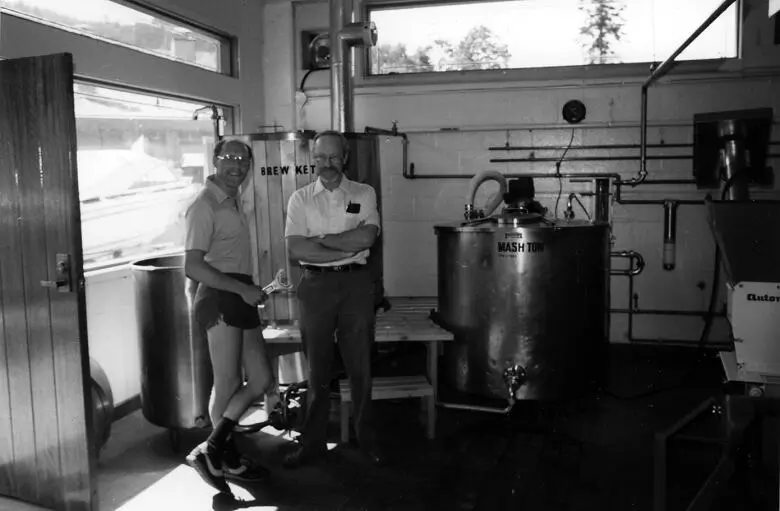What does it mean to be a Canadian craft brewery?
Although provincial guidelines vary slightly, craft brewers across Canada follow the same operating principles:
- Craft breweries are independently owned and operated, where a large beverage company cannot be a controlling shareholder
- The brewery is small, producing no more than 400,000 hectolitres of beer per year, though the vast majority of craft breweries are producing less than 5,000 hectolitres
- Craft brewing is largely defined through production, but also embodies a passion for creating high quality, fresh and flavourful brews
How Did the Craft Beer Movement Start?
The craft beer movement began in the United States in the 1960s and the United Kingdom, in the early 70s. In 1965, Fritz Maytag, great-grandson of the home appliance magnate becomes the primary shareholder of Anchor Steam, a California-based brewery. On the brink of insolvency, Maytag bought the brewery in an effort to revive it, to keep his favourite beer style alive. Maytag opted to make a beer using all malted grains, a novel concept in American brewing at that time, opting for crystal malt over sugar and food colouring. His dedication to quality, consistency and innovation served to encapsulate the craft ethos of brewing, as the craft beer movement gained momentum.
During the 70s, there were few craft breweries in the US, but success of Anchor Steam, and other microbreweries, revealed that there was, in fact, a market for high-quality, small-batch beer. Homebrewing was banned in the US, a huge impediment to the craft beer movement, and by the mid-70s, homebrewing enthusiasts began campaigning for legalization. In 1978, Jimmy Carter signed a bill removing the restrictions on homebrewing, though it still allowed each state the authority to regulate alcohol within their own jurisdiction. The legalization of homebrewing in the US provided the foundation for craft beer, paving the way for its growth in America.
UK Craft Beer Revolution
By the early 1970s, British consumers were becoming increasingly dissatisfied with declining quality of beer, largely attributed to mass production and homogenization of the British brewing industry, as well as the near-disappearance of cask-conditioned ales. In 1971, an independent consumer organization called CAMRA, originally called the Campaign for the Revitalization of Ale, was formed in an effort protect and improve beer consumer rights, as well as to set standards for quality, diversity of beer styles.
Interest in CAMRA, and their objectives spread rapidly, expanding quickly and striking back at over-commercialization with organized boycotts. By 1973, CAMRA, now renamed Campaign for Real Ale, grew its membership to over 5,000 volunteers. The CAMRA movement has been instrumental in setting higher standards for beer production, as well as the protection of consumer interests.
Craft Beer in Canada
At the turn of the 20th century, there were over one hundred independent breweries in Canada. World War I, Prohibition, the Great Depression and the Second World War effectively decimated the independent brewing industry, leading to decades of consolidation and the formation of a handful of large companies. By the early 1980s, only 10 brewing companies remained, with Molson, Labatt and Carling O’Keefe controlling 96% of the Canadian market.
In 1978, workers at Molson, Labatt and Carling O’Keefe were locked out, halting beer production for 17 weeks. John Mitchell, owner of Troller Pub in Horseshoe Bay, Vancouver, was angry when the big beer strike resulted in his taps running dry for several months. Growing up in England, Mitchell had always appreciated quality cask ales and was inspired by a story of a British pub owner brewing his own beer. He wanted to brew his own beer, but brew pubs and craft brewing were still illegal in Canada.
Mitchell lobbied against all levels of government, and after 18 months, the province granted Mitchell’s request, deregulating pre-Prohibition era laws on brewing. Amending brewing laws was, of course, mutually beneficial, as the province lost huge amounts of revenue from the Big Three monopoly and their ill-timed strike. In 1982, Mitchell teamed up with brewer Frank Appleton to open Horseshoe Bay Brewing, Canada’s first craft brewery.
Beer with Real Flavour
In Canada, several microbreweries and brewpubs opened in 1984, including Spinnakers and Granville Island in BC, Big Rock in Alberta, Granite Brewing in Nova Scotia, and Brick Brewing, in Waterloo, Ontario. Inspired by the craft beer movement in the US, and in opposition to the generic light-tasting lagers produced by the Big Three, most microbreweries brewed with barley exclusively, giving up grains like corn and rice. These beers were unpasteurized, prioritizing flavour and quality over a long shelf life.
By 1985, there were 10 craft brewers in Canada, in 2023 there are over 1,100. According to Beer Canada, although the overall beer market is shrinking, the sales of craft beer are steadily rising, currently representing 10 per cent of the entire $9.1 billion in 2022.
(Leah is a Toronto based freelance writer as well as the Beer Boss and a server at C’est What)


